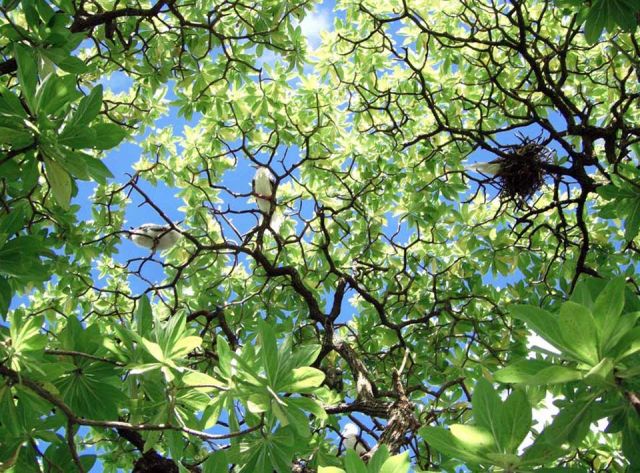Paradise Regained: How the Palmyra Atoll Got Rid of Invasive Mosquitoes
The elimination of the biting pests was an added bonus after researchers unleashed a rat-eradication endeavor on the tiny islands.

One thousand miles south of Hawaii, the Palmyra Atoll, a horseshoe-shaped chain of islets, is about as isolated as you can imagine, says Erin Mordecai, a biologist at Stanford University who has visited the islets to conduct ecology research. “It’s really, really remote and has never had a native human population,” she says. Year-round, the population varies between approximately five and 30 people—generally, scientific researchers and Nature Conservancy staff.
But the atoll is far from unspoiled, Mordecai continues. “The most human impact it’s had was during World War II when there were about 2,400 troops.” Considering the brevity of the soldiers’ inhabitation, the repercussions were immense. “They built airstrips on some of the islands. There’s still metal and debris that they left behind.” They also brought rats and mosquitoes, neither of which is native to the atoll. There are in fact no native mammals and only a few native insects.
With no predators and plenty of food, the rat population exploded. In 2011, it was estimated to have reached 40,000. “There’s not a lot of land . . . [so] they were everywhere,” says wildlife refuge manager Stefan Kropidlowski of the US Fish and Wildlife Service in Honolulu who oversees research visits to the atoll. Kropidlowski had not visited Palymra before the eradication, but “by all accounts,” he says, “if you walked though the jungle, they were in the trees, they were jumping up around you, they were crawling through the cabin screens at night, and it was a huge hassle to store food.”
From a conservation perspective, Kropidlowski says, “the rats were predating a lot of the seabirds and probably resulted in the extirpation of a number of ground-nesting [species].” So, when the atoll became a National Wildlife Refuge in the early 2000s, he says, “rat eradication was one of the major conservation priorities . . . to give the seabirds a chance to start coming back.”
A 2011 atoll-wide rat-poisoning endeavor successfully eliminated the rodents, and, in the following years, conservation researchers documented the effects to the native wildlife. Among these scientists was Kevin Lafferty of the US Geological Survey and the University of California, Santa Barbara, who led the research. “We were looking at how the food web was changing after rat removal,” he explains.